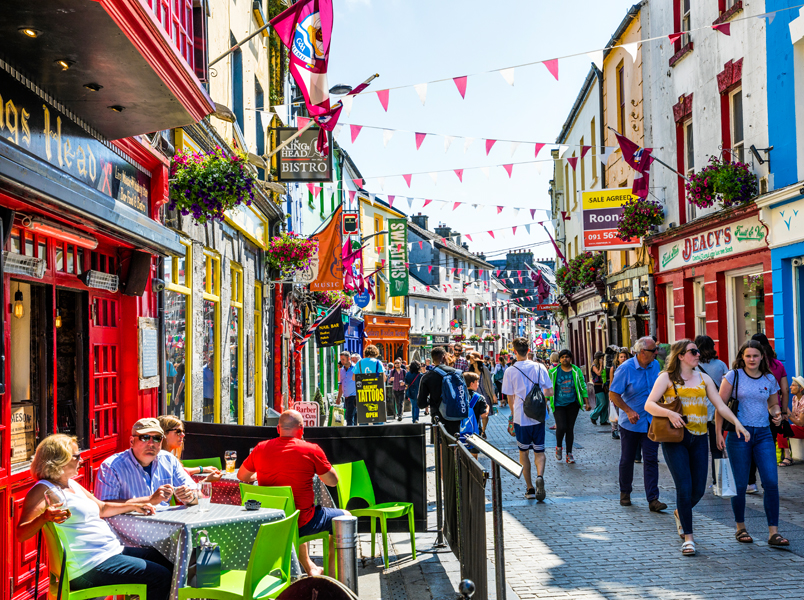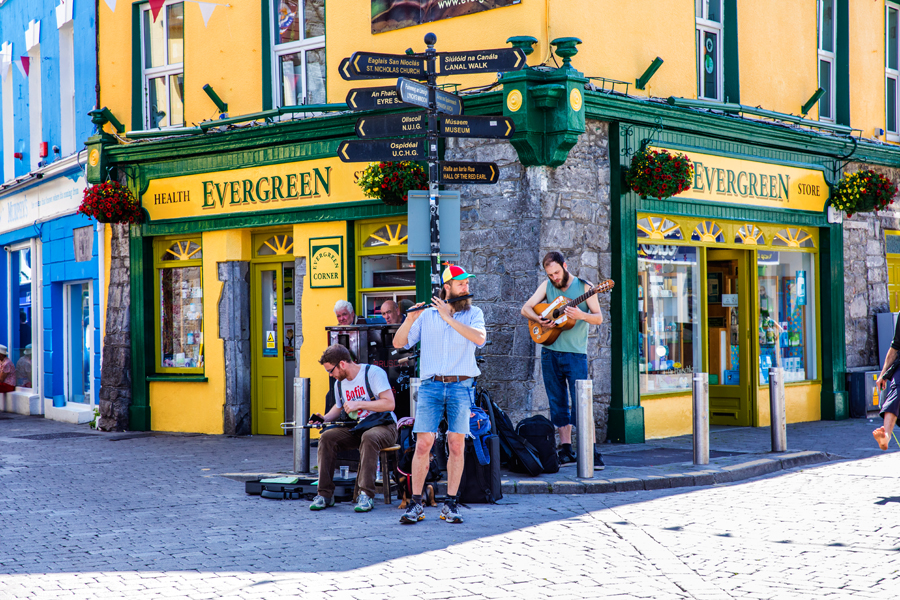Galway City
Galway city known as the city of Tribes is often seen as the cultural capital of Ireland. With its medieval streets, its cobblestone walks, its great arts festival and ruined castles, Galway has something unique to offer. Historically the city was a Norman fortified town governed by 14 families, each with their own castle and still holds many remnants of these medieval times today. Built along the shortest river in Ireland, the Corrib, Galway developed as a trading port with the Spanish and much of its wealth came from this trade. The Spanish Arch, the last of the archways still standing is located at the bottom of the main street and is definitely worth a visit. The 6 archways acted as a way of protecting the town, fortifying it, with a wall that secured the outer perimeters. Inside the old town were 14 castles, simple tower houses marking the governors, with trades and guilds of merchants linking these castles together to form the medieval streets we walk through today. The Lynchs, the most powerful of the families boasted 84 Mayors over a 169 year period. Lynch’s Castle is the best preserved castle in town, home to ‘The Bank of Ireland’ today yet inside the foyer of the bank is an old map of the city during medieval times. The Lynch family also hold the most tragic of stories relating to Galway in which James Lynch, Warden of Galway, hanged his son for murder in 1493 and Lynch’s window stands testament to that story.
St Nicolas Church is a sanctuary of calm, a serene well preserved church which in recent years has opened its doors to live music concerts and performances. It too has many old stories; Jane Eyre leaves an epitaph on the walls perhaps Emily Bronte read or Christopher Columbus was said to have visited the church on his voyage to the Faro Islands. The church was defaced in 1660 by the worst British military man to land in Ireland, Oliver Cromwell. As a mark of disrespect against the Galway people, his soldiers used the church as a stable for their horses and chopped the heads off the angels. The other church in town is the Cathedral but don’t be deceived by its Gothic style this building is just over 50 years old.
A vibrant town with music on its streets by day and night, stroll down Shop Street past the Claddagh shop where you can learn about the famous seal of the city. The claddagh was original an area of Galway where the fishermen of the city lived, the fishermen were the richest folks in town. Yet also the claddagh has become famous as a style of ring some call it the Irish wedding ring. Yet it was the symbol of the Kings seal, designed by an escaped goldsmith slave, who was released by the King and wished to honour him with a great design. The heart, the hands and the crown are the 3 motifs brought together in the old expression; ‘let love, loyalty and friendship reign’.
There are many places worthy of a visit in Galway from Eyre Square where the flags and coats of arms of the 14 families that governed can be seen or the Museum beside the Spanish arch which is free to visit but closed on Sundays. The city’s bohemian market is on Saturday and Sundays beside St Nicolas’ Church. Tig Neachtains is an authentic pub with a tale of Humanity Dick, the founder of the RSPCA and his many animals. Or lastly, try a visit to ‘The Kings Head’ pub which boasts to have been built by a man who beheaded the king of England.



